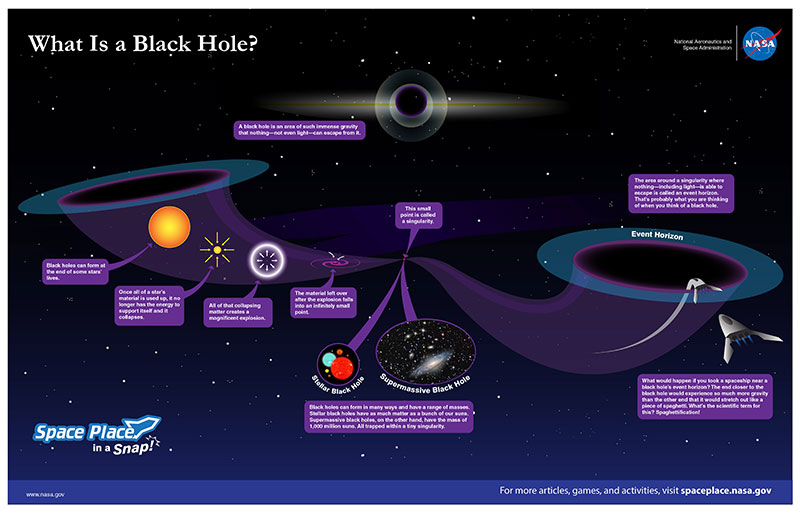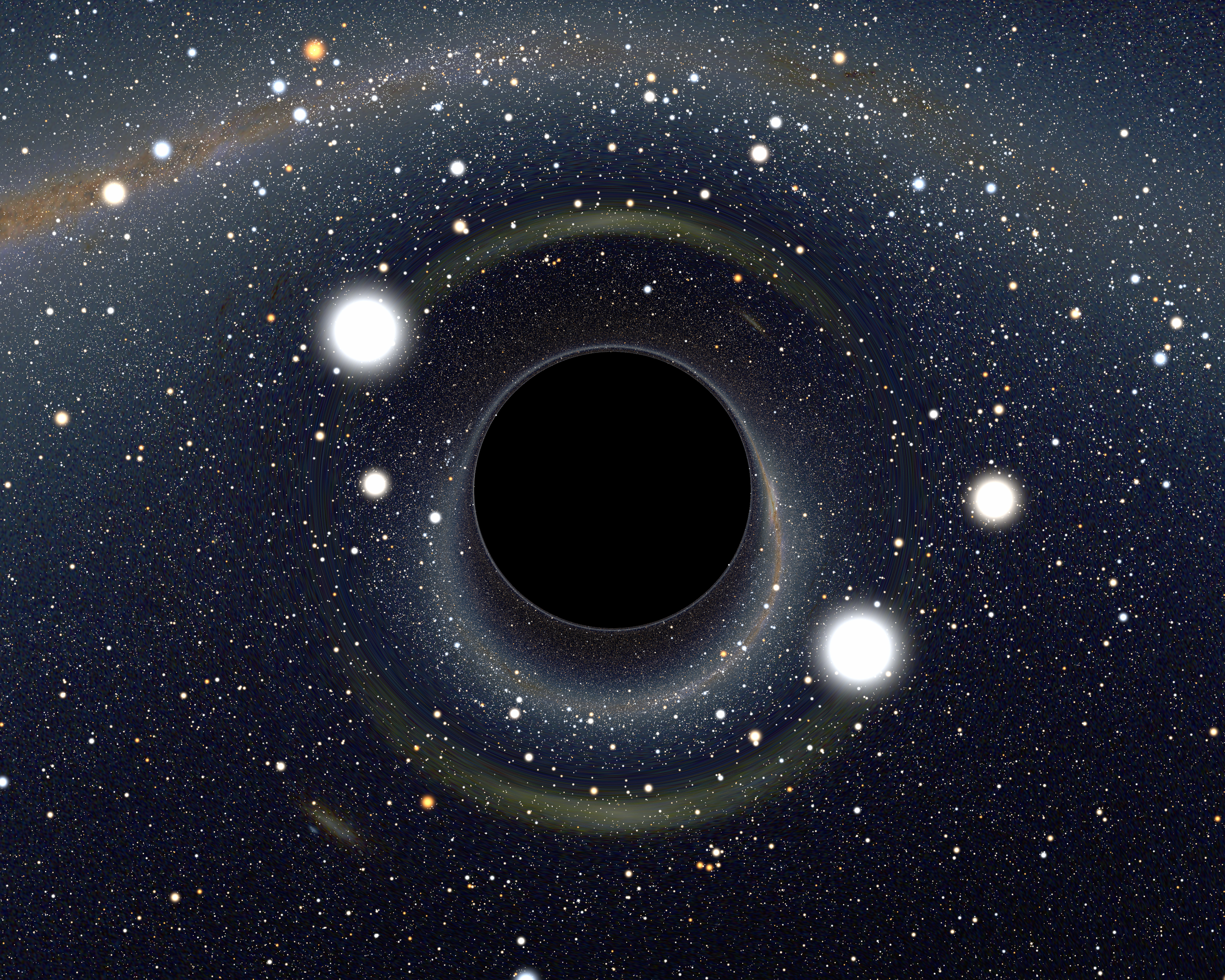

[Image source: nasa.gov]
Have you ever heard of about a black hole? Well I have. A black hole is an object where its gravitational field that can swallow up anything at the speed of light and bends spacetime. Spacetime is a two dimensional plane where if you add any thing which has mass then it can bend space time. This is visible in black hole when it passes through something, this is called gravitational lensing. Gravitational lensing is where the black hole bends space time creating a distortion.

[Image source: nasa.gov]

[Image source: nasa.gov]
In every black hole there is an event horizon and a photon sphere. The event horizon is where nothing can get past it, not even at the speed of light. The photon sphere is where the photons are forced to orbit around in a stable orbit. In the center of all black holes is called gravitational singularity. Gravitational singularity is where spacetime curvature is infinite. In a spinning black hole there is something called ring singularity. This the gravitational singularity of a spinning black hole. Black holes can get bigger by absorbing lots and lots of matter. Any black hole will continuously absorb gas and interstellar dust from its surroundings and omnipresent cosmic background radiation. The similar process has been suggested for the formation of intermediate mass black holes found in globular clusters.
Another possibility for black hole growth is that black holes can merge into other black holes and stars.
Black holes are the result of really massive stars. The largest type of black hole is the supermassive black hole. The smallest type of black hole is the primordial black holes and the medium sized black holes are called stellar black holes.
Primordial black holes might be the size as small as an atom, but with the mass is of a large mountain such Mount Everest. Supermassive black holes have masses, which is greater than one million solar masses and it will have a diameter about the size of the whole solar system. Stellar black holes have the size about ten miles and has about 20 times the mass of the Sun. Primordial black holes may have formed soon after the big bang.
Stellar black holes form when massive stars collapses on itself. A star has to be over 20 solar masses to become a stellar black hole.

[Image source: nasa.gov]

[Image source: nasa.gov][This is the the picture of the the supermassive black hole in the galaxy Messier 87]
For supermassive black holes, which are at the center of each galaxy, may have started out with a stellar black hole and kept on eating many stars and other astronomical objects to get more larger and more massive. May be that dark matter is made out of primordial black holes.
Every single black hole must die in the same way. A black hole dies by Hawking radiation. This was created by a man named Stephen Hawking. In Hawking radiation black holes evaporate. This means that black holes can die. Hawking radiation may produce a white hole. A white hole is the opposite of a black hole. The black hole sucks up matter while a white hole releases matter.
Binary black holes are very rare. One of the most famous binary black hole is in the galaxy called NGC 6240. This is a galaxy which was formed by two smaller galaxies colliding into each other. In the core of the galaxy there is not one supermassive black, but there are two supermassive black holes. The bigger black hole might throw out the smaller black hole, but many people think that they will collide.
One other binary black hole is Cygnus X-1. This is a binary black hole which includes the black hole called Cygnus X-1 and O type supergiant star called HDE 226868. Cygnus X-1 is eating the star by taking away its mass.

[Image source: nasa.gov]
Black holes are one of the most known objects in the universe. Black holes are very amazing. Black holes gave birth to us and if black hole weren't here then we wouldn't be here. Black holes are one of the most dangerous and beautiful objects. It is beautiful because of its gravitational lensing. It is dangerous if you come too close to it. Black holes have an infinite density, so that it can distort space time and creates a distortion visible to the naked eye and is called gravitational lensing. Black holes have a very high mass. All of the supermassive have over one million solar masses. Our black hole, Sagittarius A* has a mass just 4 million solar masses. The most massive supermassive black hole is found in the galaxy called NGC 1277 which has over 1000 times more massive than our supermassive black hole. Are black holes your favorite astronomical object in the universe?